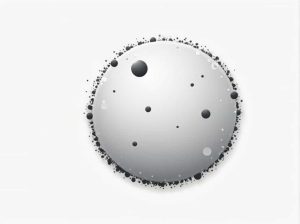Venus, often called Earth’s twin, is one of the most fascinating planets in our solar system. While it shares similarities with Earth in size and composition, its rotation is incredibly unique. One of the most surprising facts about Venus is that a single day on the planet lasts longer than its entire year. This phenomenon has puzzled scientists for decades and offers a deeper insight into the complex dynamics of planetary motion.
In this topic, we will explore why Venus has such an unusual rotation, how it affects the planet’s climate and atmosphere, and what this means for future exploration.
Understanding Venus’s Rotation
How Long Is a Day on Venus?
A “day” on a planet is defined by how long it takes to complete one full rotation on its axis. On Earth, this takes approximately 24 hours. However, on Venus, one full rotation takes a staggering 243 Earth days!
How Long Is a Year on Venus?
A planet’s “year” refers to the time it takes to orbit the Sun. Venus completes one full orbit around the Sun in just 225 Earth days. This means Venus’s day is actually longer than its year.
Why Is Venus’s Rotation So Slow?
Scientists believe that Venus’s slow rotation is due to several factors:
- Gravitational Influence from the Sun – Venus is closer to the Sun than Earth, and its thick atmosphere interacts strongly with solar forces.
- Tidal Forces – The Sun’s gravitational pull slows down Venus’s rotation over time.
- Possible Ancient Collision – Some theories suggest that Venus might have experienced a massive impact in its early history, altering its rotation dramatically.
Venus Spins Backward
Not only does Venus rotate slowly, but it also spins in the opposite direction of most planets, including Earth. This means that if you stood on Venus, you would see the Sun rising in the west and setting in the east—the complete opposite of what happens on Earth.
How Venus’s Slow Rotation Affects Its Atmosphere
Venus is famous for its extreme weather conditions. Its thick atmosphere, composed mainly of carbon dioxide, creates a powerful greenhouse effect, making it the hottest planet in the solar system.
The Greenhouse Effect on Venus
- Surface temperatures can reach 467°C (872°F)—hot enough to melt lead.
- The thick clouds trap heat, preventing it from escaping into space.
- Winds can reach speeds of 360 km/h (224 mph) in the upper atmosphere.
A Slow Day Means Long Sunlight Exposure
Since Venus takes so long to rotate, its days and nights last for months. This prolonged exposure to sunlight heats the surface intensely, contributing to its scorching temperatures.
The Mystery of Venus’s Rotation: Unanswered Questions
Despite decades of research, there are still many mysteries surrounding Venus’s unusual rotation. Some of the biggest questions include:
- Why did Venus’s rotation slow down so dramatically?
- Did it once spin like Earth before something changed its motion?
- How do atmospheric forces contribute to the planet’s rotational behavior?
Future missions to Venus, such as NASA’s VERITAS and DAVINCI+, aim to uncover more details about the planet’s history and rotation.
How Venus’s Rotation Affects Space Missions
Venus’s slow and retrograde rotation creates challenges for space exploration:
- Landing Complications – The extreme heat and thick atmosphere make it difficult for spacecraft to survive for long durations.
- Navigation Challenges – The slow rotation makes it tricky for orbiting spacecraft to track surface features accurately.
- Weather Hazards – High-speed winds in the upper atmosphere pose risks for aerial probes.
What Can We Learn from Venus?
Studying Venus can provide insights into Earth’s past and future. Some scientists believe Venus might have once had oceans, similar to Earth, before a runaway greenhouse effect made it uninhabitable. Understanding how this happened could help us predict climate changes on Earth.
Venus remains one of the most mysterious and intriguing planets in our solar system. The fact that a day on Venus is longer than a year is just one of the many bizarre characteristics that set it apart. Its slow and backward rotation, thick atmosphere, and scorching temperatures make it a challenging but fascinating world to explore.
With upcoming missions dedicated to studying Venus, we may soon unlock more secrets about its rotation, atmosphere, and history—bringing us closer to understanding not only Venus but also our own planet.



